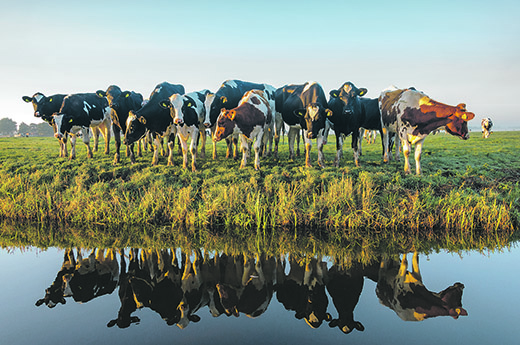Bay of Plenty waterways are in reasonable condition compared to other parts of the country, but there is still room for improvement says Brent Mountford, Federated Farmers Bay of Plenty meat and fibre chairman. “Water is high on the agenda. Our right to use it and how we as farmers affect waterways will be debated. It is timely that water quality is looked at. Stock exclusion from waterways must happen. Limits on nutrient-leaching will be ongoing and ways in which we can reduce this must be explored,” he says. “However, the concept of ‘grandfathering’ is unacceptable. This system allows existing polluters to continue as they are, whereas those that have reduced their levels to acceptable standards are penalised without any room for sustainable growth in the future. “Many of us are a long way down the track of excluding stock from waterways and protecting vulnerable eco-systems. Our positive relationship with the Bay of Plenty Regional Council has assisted this process. We will all need to keep up-to-date with developments within our catchment area.” Challenges head Brent says water issues are among the many and varied challenges ahead for farmers. “Most, but not all, are outside the farm gate, but could potentially impact heavily on how we farm. Weather patterns (climate change), new pests, weeds, and exotic diseases that have been able to establish themselves in New Zealand are now a reality due to the changing climate. To me, this means that more resources should be allocated to our border control systems. Importers should be funding this, not exporters.” The beef market has remained strong. Lamb returns are now up at $6 per kilo, despite warnings at the start of the season for lower expected returns than in previous years. Brent says some meat and fibre members were surveyed around NZ about what they saw as a sustainable return per kilo for lamb, beef and wool. The consensus was $6 across all three. “Beef and lamb are getting there, but what do we do about trying to achieve this with wool? It would be nice to think that our industry could halt its slow decline in the near future. I believe wool, a natural sustainable resource, is the key. Surely $6 per kilo is a realistic target. Ewe lambing percentage “I have been looking at our livestock productivity for beef and lamb over the past 25 years. It makes for some interesting reading. Breeding ewes have dropped by 51 per cent since 1990/91 but total lamb production has only dropped by 8.4 per cent. The reason for this is that the ewe lambing percentage has increased from 100 per cent up to 127 per cent. Hogget lambs as a percentile of all lambs has gone from 0 per cent to four per cent. “Average lamb weights have gone from 14.35kg up to 18.08kg. Total lamb kilos/ewe have increased from 9.76kg up to 19.44kg – an increase of 99 per cent. “Interestingly, steer weights in that time period have only increased by two per cent from 297kg up to 302kg.” Overall, the sheep flock has reduced by 49 per cent and the beef herd by 22 per cent. Dairy has increased by 85 per cent says Brent.



0 Comments
Leave a Comment